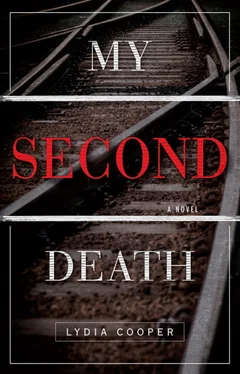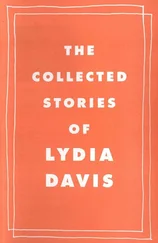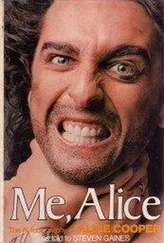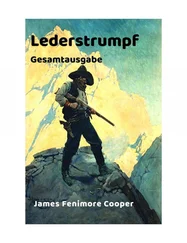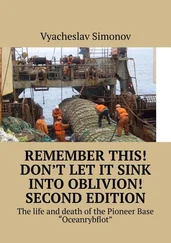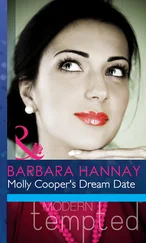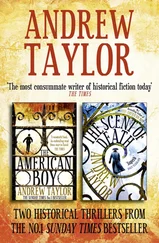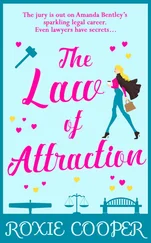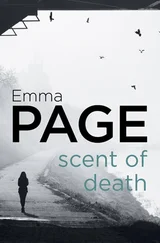As I walk back to campus the name that has been eluding me snaps into my brain. Ambien. My mother used to take sleeping pills after Stephen was born.
I head east to the campus library and go inside and log online. Zolpidem tartrate is indeed the generic name for Ambien. I type quickly and discover that fluoxetine hydrochloride is the generic name for Prozac. The recommended daily dose of Ambien is about four milligrams. I tap the desktop with my fingernails, thinking about how many pills it would take to overdose, and thinking about premeditation and mental instability and the nature of good and evil.
After a bit I emerge from the library and climb down the stacked steps overlooking a dry fountain in the middle of the bricked central walkway on campus. A student coming out of a building adjacent to the library turns to his left and his movement catches my eye. It’s Aidan. He walks quickly, headed away from me, his hands in the pockets of a gray sweatshirt. His dark head bobs through clots of students like a button floating downstream.
I hesitate. Then I jog down the steps and follow him.
He cuts behind a building and steps up on a cracked cement loading ramp and goes in through a gray industrial door. I look around and see a blue sign that tells me this is the art building. I put out my hand. The metal door is cold.
Inside I go down a long, shadowy hall. The corkboard covering the walls has been chewed by tacks and staples. The hall opens into a foyer area with a faded brown couch and a few planters. A twisted metal wreck lies in the center of the room under a skylight. Speckled sunlight lies like a cancerous skin across the metal sculpture. I walk into the center of the foyer and look around. Copper statues, prints of anime cartoons and acrylic life-size paintings of crucified, full-breasted women line the walls.
Aidan is not in the foyer. I don’t know where he went.
The foyer is empty, so I go over to the drinking fountain and drink. Then I fill my hands with water and feed the crisp brown palm tree next to the drinking fountain.
I wander back into the foyer and sit on a brown couch. The stiff cushion rises and there is an unrolled condom between the cushion and the couch arm. I don’t touch the condom. I unzip my backpack and take out a textbook.
Two students come into the foyer, but they don’t come near me. They head for the elevator and stand around arguing while waiting for it to arrive.
“I’m not going out with Lindsey, it was just a movie.”
“How am I supposed to believe you? How?”
A finger pokes my scapula. I startle. My lungs airless, my skin hot.
And then I swallow a couple times. Breathe. And, calmer, twist around. He’s leaning his hip against the back of the couch, wearing a white long-sleeved thermal undershirt under a brown paint-stained smock.
“What are you doing here?”
The corners of his mouth pinch into a smile. His solitary good eye glitters.
I can still feel the imprint of his finger on my shoulder. I imagine the clean snap of bone if I wrench his finger out of its socket. I swallow again and clear my throat.
“I saw you leaving the library.”
He tilts his head to look at me with his right eye. Then he comes around the side of the couch and sits down at the far end, near the arm. The condom falls out and he picks it up and stretches it like a rubber band.
“The greatest lie is the lie we tell ourselves.”
“What?”
He points two condom-wrapped fingers at the book I’ve been reading. It’s a book of selected readings by Nietzsche, translated into English. I picked it up at the library, not really sure what I could hope to discover in reading it.
My roommate, who apparently knows at least his more basic Nietzsche, says, “‘The greatest lie is the lie we tell ourselves.’ He said that, right?”
For a second that seems to stretch like rubber, creaking with the pressure, I don’t say anything.
He waits, and then says, “What are you really doing here?”
I study him for a long time. But I still can’t see anything in his face. I wonder if his very innocence is the most perfect mask.
“I’m reading.” It’s the truth. He didn’t ask why I am here.
He flips the condom at me. I flinch and it hits my shoulder. I fling it off me.
He laughs. I flinch again.
He stops laughing. He looks at me. Then he stands up. “I’m in the middle of class. I need to get back. Follow me.”
I follow him down a narrow hall with brown tiles. He pushes through two heavy metal doors at the far end.
We walk into a long, low room that looks like a factory warehouse, full of hulking metal machines and stainless steel bench tables. Fluorescent lights buzz overhead.
“Do you know what a print is?”
I see other people standing at the counters. I can’t see what they’re doing. “No.”
He walks across the room and I follow several steps behind. In the middle of the room are two large metal presses, round steamroller wheels each with a crank handle. I put my hand against one of the smooth curved sides of the roller. “Don’t touch that,” he says sharply.
He goes to a table near the water tray, bends and opens a thin drawer, and pulls out a copper plate. He brings the plate and two plastic tubs of paint over to a counter stacked with jars of paintbrushes, rags, thin metal spatulas, paint-stained stirrers. He finds a rag and drapes it over my shoulder and pretends he doesn’t see me back up a step, startled. “Hold that,” he says.
I look at the copper sheet I am holding in my hand. It has fine lines etched into it, small scarred wedges, but I can’t tell what the picture is.
“Where do you want me to put this?”
He doesn’t say anything, just drops a glob of blue-gray paint into a pile of deep reddish-brown paint. I rest the plate on the countertop, put the point of my chin on the top edge, and watch him. He pours viscous oil onto the chalky piles of paint and then mixes the paint with a wooden spatula, folding the slippery oil and stiff peaks of paint together until it becomes a thick liquid the color of boiled sour cream and beets. He moves quickly, his hands confident. His thermal undershirt cuffs dangle threads between his fingers. He puts his right wrist to his mouth, holds the cuff between teeth, and pulls the sleeve back. He looks sideways at me.
“A little help?”
My backpack is heavy and hurts my shoulder. I look around the room for someone to help him.
He says, “I meant, can you pull my left sleeve up for me?”
I stare at him in silence. And then I reach over. His skin is cold. I realize it is cold in the drafty warehouse room. My skin feels prickly and hot. I tug his sleeve back.
“Thanks.”
He takes the print from me and lays it on the tabletop and starts smearing paint on top of it with even strokes. He works paint into every line in the copper plate, stroking smoothly. His face is tense, contracted. After he covers the plate in paint, he starts scraping it off again, using the edge of the spatula to peel off curls of sludgy paint.
When the copper plate has been stripped clean, he goes to a narrow metal tray. Sheets of rag paper float in about two inches of water in the tray. He lifts one of the water-supple papers over his arm and goes to a heavy metal press in the middle of the room. He says, “Bring the plate over.”
I pick up the plate by the edges.
He takes the print and smears paint over it, then sets it down on the press table. He sets the rag paper over the print, spreads a towel across the top of the rag paper, and winds the handle of the press until the heavy round press has rolled over the entire paper. Then he lifts back the towel, which has gotten crushed flat, and he peels up the rag paper.
Читать дальше
